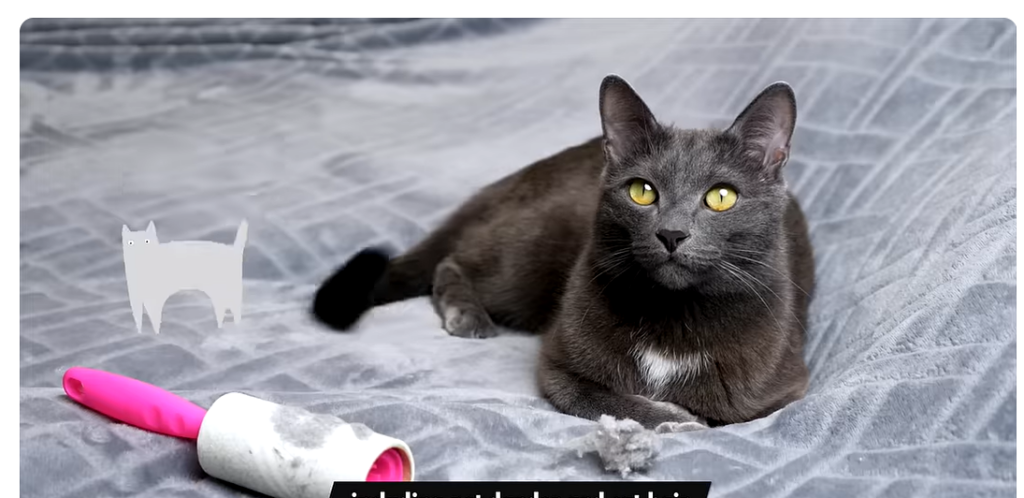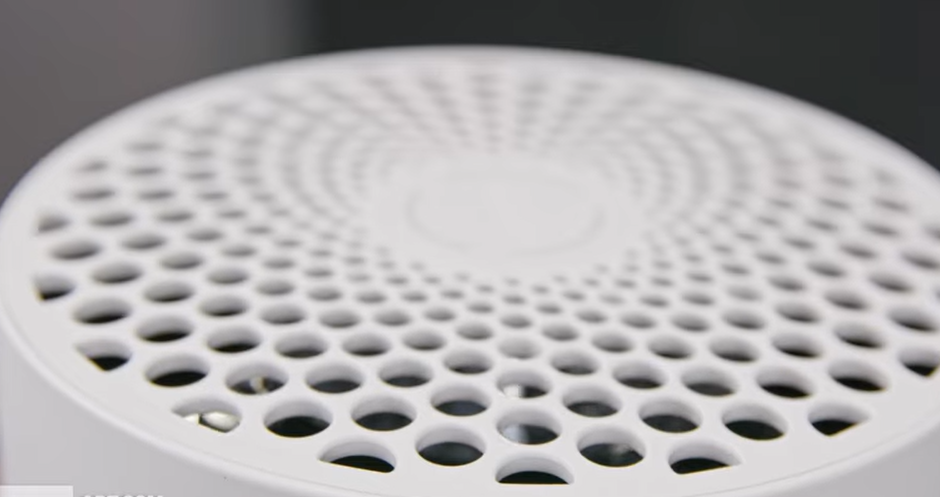
Yes, air purifiers can help with cat smell. They work by filtering out the particles and gases that cause unpleasant odors, including those from cat urine, dander, and litter boxes. But, not all air purifiers are created equal. This comprehensive guide will explore how air purifiers combat cat odors, what features to look for, and how to maximize their effectiveness for a fresher, cleaner home.
Cat Smells: Decoding the Source
Before delving into how air purifiers help, it’s important to know where cat smells come from. Understanding the source allows you to target the problem more effectively.

- Cat Urine: This is a major culprit. Cat urine contains uric acid, which can crystallize and cling to surfaces, creating a persistent and pungent odor.
- Cat Dander: Similar to human dandruff, cat dander consists of tiny skin flakes that cats shed. This dander carries allergens and contributes to a musty, animal-like smell.
- Litter Box: Feces and urine in the litter box generate ammonia and other unpleasant odors. Even with regular cleaning, lingering smells can permeate the air.
- Saliva: Cats groom themselves frequently, spreading saliva onto their fur. This saliva can also contribute to odors, especially if the cat has dental issues.
- General Cat Odor: Cats, like all animals, have a natural scent. This scent can become more noticeable in enclosed spaces or if the cat isn’t groomed regularly.
How Air Purifiers Neutralize Cat Odors
Air purifiers use different technologies to remove odors and pollutants from the air. Here’s how they work against cat smells:

- HEPA Filters: High-Efficiency Particulate Air (HEPA) filters are designed to capture tiny particles, including cat dander and dust. These filters trap allergens and reduce the overall musty smell associated with pets.
- Activated Carbon Filters: These filters contain activated carbon, which is treated to create a large surface area. This surface area attracts and absorbs odor molecules, including those from cat urine, feces, and saliva.
- Ozone Generators: Ozone generators produce ozone, a gas that can oxidize and neutralize odors. However, ozone can be harmful to humans and pets at high concentrations, so these are not recommended. Please note that many sources advise against using ozone generators due to health concerns.
- UV Light: Some air purifiers use ultraviolet (UV) light to kill bacteria and viruses. While UV light can help with overall air quality, it’s not very effective at removing odors directly.
Choosing the Right Air Purifier for Cat Odor
Selecting the appropriate air purifier is essential for eliminating cat smells. Here are key features to consider:
- HEPA Filter: A true HEPA filter is crucial for capturing cat dander and allergens.
- Activated Carbon Filter: Look for an air purifier with a substantial activated carbon filter to absorb odors effectively. The thicker the carbon filter, the better it will work.
- Filter Life: Consider the lifespan of the filters and the cost of replacement. Some filters need to be replaced every few months, while others can last for a year or more.
- Coverage Area: Ensure the air purifier is designed to handle the square footage of the room where it will be used. Using an undersized air purifier won’t be as effective.
- CADR Rating: The Clean Air Delivery Rate (CADR) indicates how quickly the air purifier cleans a room. Look for a high CADR rating for dust, pollen, and smoke to ensure it can handle cat dander and odors.
- Noise Level: Some air purifiers can be quite noisy, especially at higher speeds. Consider the noise level if you plan to use it in a bedroom or living area.
- Additional Features: Some air purifiers have features like air quality sensors, auto mode (which adjusts fan speed based on air quality), and sleep mode (for quieter operation).
Key Air Purifier Features Explained

Here’s a more detailed look at some of the important features:
- HEPA Filtration: Captures 99.97% of particles 0.3 microns or larger, including cat dander, dust mites, and pollen.
- Activated Carbon: Absorbs gases and odors, including those from cat urine, feces, and volatile organic compounds (VOCs).
- Pre-Filter: Catches larger particles like pet hair and dust, extending the life of the HEPA and carbon filters.
- CADR (Clean Air Delivery Rate): Measures the volume of clean air an air purifier produces per minute. Higher CADR ratings indicate better performance.
Comparing Air Purifier Technologies
| Feature | HEPA Filter | Activated Carbon Filter | UV Light | Ozone Generator |
|---|---|---|---|---|
| Function | Captures particles | Absorbs odors and gases | Kills bacteria and viruses | Oxidizes odors |
| Effectiveness | Excellent for dander and allergens | Excellent for cat urine and other odors | Moderate for air quality | Potentially harmful, not recommended |
| Safety | Safe | Safe | Safe when properly contained | Harmful to humans and pets |
Best Practices for Using Air Purifiers for Cat Odor

To maximize the effectiveness of your air purifier, follow these tips:
- Placement: Place the air purifier in the room where your cat spends the most time, or near the litter box.
- Run Continuously: For best results, run the air purifier 24/7.
- Regular Cleaning: Clean the pre-filter regularly (every 2-4 weeks) to remove pet hair and dust.
- Filter Replacement: Replace the HEPA and carbon filters according to the manufacturer’s instructions.
- Ventilation: While air purifiers help, good ventilation is also important. Open windows regularly to air out your home.
- Address the Source: Clean up cat urine accidents immediately and thoroughly. Use an enzymatic cleaner designed to break down uric acid.
- Litter Box Maintenance: Scoop the litter box daily and change the litter completely at least once a week.
- Grooming: Brush your cat regularly to reduce shedding and dander.
- Professional Cleaning: Consider professional carpet and upholstery cleaning to remove embedded odors and allergens.
Where to Place Your Air Purifier
Strategic placement is key to optimizing air purifier performance. Here are some tips:
- Near the Litter Box: This is a primary source of odor, so placing an air purifier nearby can help neutralize smells quickly.
- In the Cat’s Favorite Room: If your cat spends a lot of time in a particular room, placing an air purifier there will help remove dander and other allergens.
- Away from Obstructions: Make sure the air purifier is not blocked by furniture or walls, which can restrict airflow.
- Central Location: In larger homes, consider placing air purifiers in central locations to improve air quality throughout the house.
Air Purifier for Cat Odor Reviews: What Users Say
When choosing an air purifier, it’s helpful to consider the experiences of other cat owners. Here are some common themes from air purifier for cat odor reviews:
- Effectiveness: Many users report a noticeable reduction in cat odors, especially when using air purifiers with both HEPA and activated carbon filters.
- Allergy Relief: Air purifiers can help reduce allergy symptoms by removing cat dander and other allergens from the air.
- Filter Replacement: Some users complain about the cost and frequency of filter replacements. Look for air purifiers with long-lasting filters to minimize this issue.
- Noise Level: Noise can be a concern, especially in bedrooms. Choose an air purifier with a quiet mode or low noise rating.
- CADR Rating Importance: Users highlight that CADR ratings matter. A higher CADR is often associated with a cleaner-smelling home
Positive: “The air purifier eliminated the cat urine smell and has been a great help. I can breathe much easier.”
Negative: “The replacement filters are expensive. However, the unit works great in removing cat dander.”
Additional Strategies for Eliminating Cat Odor
While air purifiers are effective, combining them with other strategies can further improve air quality and eliminate cat odors:
- Enzymatic Cleaners: These cleaners contain enzymes that break down the uric acid in cat urine, eliminating the odor at its source.
- Baking Soda: Sprinkle baking soda on carpets and upholstery to absorb odors. Let it sit for a few hours, then vacuum it up.
- Vinegar: Diluted white vinegar can be used to clean surfaces and neutralize odors. Test it in an inconspicuous area first.
- Proper Ventilation: Open windows and use exhaust fans to improve airflow and remove stale air.
- Regular Vacuuming: Vacuum carpets and upholstery regularly to remove pet hair and dander.
- Steam Cleaning: Steam cleaning can help remove embedded odors and allergens from carpets and upholstery.
- Air Fresheners: Use air fresheners sparingly, as they can mask odors rather than eliminate them. Choose natural air fresheners with essential oils.
The Science Behind Air Purification for Pet Odor Control
The effectiveness of air purifiers in controlling pet odors is rooted in scientific principles. HEPA filters capture particulate matter based on size and interception, while activated carbon filters utilize adsorption to trap gas molecules. The pore structure of activated carbon provides a vast surface area for odor molecules to adhere to. A well-designed air purifier leverages these principles to provide effective and sustainable odor control.
Air Purifier for Cat Allergies and Smell: A Dual Solution
Many people are allergic to cats. Cat dander contains a protein called Fel d 1, which is a major allergen. Air purifiers with HEPA filters can effectively remove cat dander from the air, reducing allergy symptoms like sneezing, coughing, and itchy eyes. By capturing both allergens and odor-causing particles, air purifiers offer a dual solution for cat owners with allergies.
Air Purifier Eliminate Cat Urine Smell: A Detailed Look
Cat urine odor is particularly challenging to eliminate due to the presence of uric acid crystals. Standard cleaning methods often fail to remove these crystals completely. Air purifiers with activated carbon filters can absorb the volatile organic compounds (VOCs) released by cat urine, reducing the smell. However, it’s crucial to address the source of the odor by using an enzymatic cleaner to break down the uric acid. An air purifier can then help remove any lingering odors.
Air Purifier Reduce Cat Dander Odor: How Effective Are They?
Cat dander is a primary contributor to pet odors. These tiny skin flakes carry allergens and create a musty smell. Air purifiers with HEPA filters are highly effective at capturing cat dander, reducing the odor associated with it. Regular use of an air purifier can significantly improve air quality and reduce the overall mustiness in a home with cats.
Fathoming Air Purification Claims
It’s important to be cautious of exaggerated claims and marketing buzzwords when choosing an air purifier. Look for products with verifiable certifications, such as those from the Association of Home Appliance Manufacturers (AHAM). Pay attention to CADR ratings and filter specifications to ensure the air purifier meets your needs.
Frequently Asked Questions (FAQ)
Q: Will an air purifier completely eliminate cat smell?
A: While air purifiers can significantly reduce cat smell, they may not eliminate it entirely. Combining an air purifier with regular cleaning and other odor-control strategies is usually necessary.
Q: How often should I replace the filters in my air purifier?
A: Filter replacement frequency depends on the type of filter and the manufacturer’s recommendations. Pre-filters should be cleaned every 2-4 weeks, while HEPA and carbon filters may need to be replaced every 6-12 months.
Q: Are ozone generators safe for removing cat odors?
A: No, ozone generators are not recommended. Ozone can be harmful to humans and pets, especially at high concentrations.
Q: Can I use an air purifier in a small apartment with a cat?
A: Yes, air purifiers can be particularly beneficial in small apartments, where odors can concentrate more easily. Choose an air purifier with a coverage area appropriate for the size of your apartment.
Q: What is the best type of air purifier for cat allergies?
A: The best air purifier for cat allergies is one with a true HEPA filter to capture cat dander and other allergens.
Q: Is it OK to leave an air purifier on all the time?
A: Yes, running an air purifier 24/7 is generally recommended for best results. Most air purifiers are designed for continuous operation and consume relatively little energy.
My name is Carlos Gadd, and I am the creator of AirPurityGuide.com.. With a passion for footwear, I share my experiences, insights, and expertise about shoes. Through my blog, I aim to guide readers in making informed decisions, finding the perfect pair, and enhancing their footwear knowledge. Join me on this journey to explore everything about shoes!